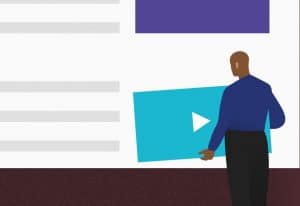Instagram CEO Adam Mosseri published on the social network’s blog and in a video on his personal account, updates and an overview of how algorithms work on Instagram, which can help us better understand how to optimize the results and reach of content in the app’s feed, and also in Stories and Reels.
Mosseri shared more information, similar to 2021, as a way to be more transparent and close to the public, explaining popular topics such as: shadowbanning, account status review, best practices for growing your Instagram audience, and how the app’s algorithmic ranking works.
Adam already starts his statement with a very important observation, which sometimes confuses the minds of millions and millions of users who use Instagram:
“Instagram doesn’t have a unique algorithm that oversees what people do and don’t see on the app. We use a variety of algorithms, classifiers and processes, each with its own purpose. We want to make the most of people’s time, and we believe that using technology to personalize everyone’s experience is the best way to do that.
Every part of the app – Feed, Stories, Explore, Reels, Search and more – uses its own algorithm tailored to how people use it. We’ve sorted things differently into these different parts of the app, and added features and controls like close friends, favorites, and followers so you can customize your experience even more.”
About the Instagram Feed
The CEO goes on to explain and detail how Instagram’s algorithms work, starting with the main feed.
“We started by defining the set of things we plan to rank first. With Feed, we consider recent posts shared by people you follow, as well as posts from accounts you don’t yet follow that we think may be of interest to you. We determine what you might be interested in based on a variety of factors, including what and who you’ve recently followed, liked or engaged with. We customize the experience so that you try to find a balance between content from accounts you follow with content from accounts you don’t follow but might be interested in. ”
With this statement, it is clear that Instagram has been using more and more artificial intelligence to customize the content displayed in each account’s feeds. Much of what’s shown is based on what Instagram believes you might like, along with feed updates from people and profiles you’ve chosen to follow.
Mosseri goes on to say that there are 4 factors that determine the ranking of the main Instagram feed, which are:
- Your activity. Posts that you’ve liked, shared, saved or commented on help us understand what you might be interested in.
- Posting information. These are both signals about a post’s popularity – think about how many people liked it and how quickly people are liking, commenting, sharing and saving a post – and more mundane information about the content itself, like when it was posted and what it did, local, if any, was appended to it.
- Information about the person who posted. This helps us get a sense of how interesting the person might be to you, and includes signals such as how many times people have interacted with that person in recent weeks.
- Your interaction history with someone. This gives us a sense of how interested you are generally in seeing a particular person’s posts. An example is whether or not you comment on each other’s posts.
Therefore, Instagram is concerned with showing more of the type and format of content that you interact with the most (with factors such as shares, likes and comments), based on your history with the aim of making the feed more personalized to your personal taste, and making it more interactive. That is, the more likely you are to take one of these actions, the higher in the Feed you will see the post.
About Stories
Stories already doesn’t use recommendations based on AI for sorting your friends and followers’ content, but the logic is somewhat similar to that of the app’s feed.
The main factors that Instagram takes into account when classifying Stories are:
- History view. This looks at how often you view an account’s stories so we can prioritize stories from accounts we think you don’t want to miss.
- Engagement history. This looks at how often you engage with stories on that account, like sending a like or DM.
- Proximity. This looks at your relationship with the author in general and how likely you are to be connected with friends or family.
Based on these factors, Instagram tries to predict how likely you are to land on a Story, and thus ranks them in order of appearance.
The beloved Reels
Finally, according to Mosseri, Reels are made to help the user discover new things. So, just like the Explore tab, most of what we see on Reels is accounts that we don’t follow. Therefore, Instagram’s behavior is to provide Reels that it thinks you might like and that might be of interest to you.
For Reels, the main ranking factors are:
- Your activity. We look at things like which reels you’ve recently liked, saved, reshared, commented on, and engaged with. These signals help us understand what content might be relevant to you.
- Your interaction history with the person who posted. As with Explore, it’s likely that the video was made by someone you’ve never heard of, but if you’ve interacted with that person, it gives us an idea of how interested you might be in what they shared.
- Coil information. These are signals about the content of the video, such as the audio track or visuals in the video, as well as popularity.
- Information about the person who posted. We consider popularity signals, such as the number of followers or the level of engagement, to help find engaging content from a wide range of people and give everyone a chance to find their audience.
It is important to pay attention not to produce Reels with watermarks in low resolution or with a lot of text, as these will have a much smaller reach.
Finally, Adam gives some tips on how you can influence what you see in your feed, such as: adding accounts to your Favorites list; respond to Instagram polls, so that the application can improve the recommendations made to the your profile; Indicate posts you are not interested in and proactively hide suggested posts.
Do you want to continue to be updated with Marketing best practices? I strongly suggest that you subscribe to The Beat, Rock Content’s interactive newsletter. We cover all the trends that matter in the Digital Marketing landscape. See you there!







